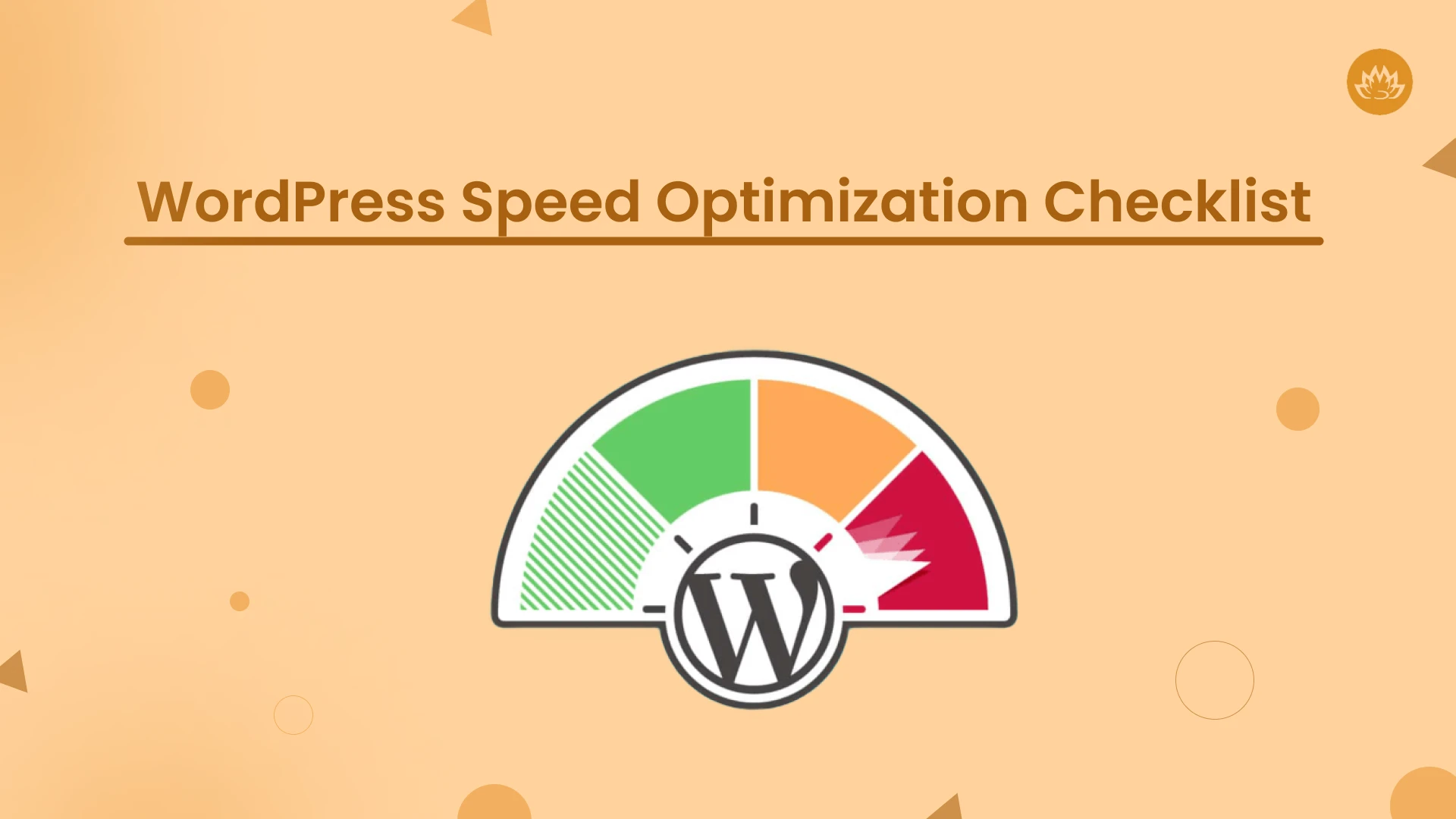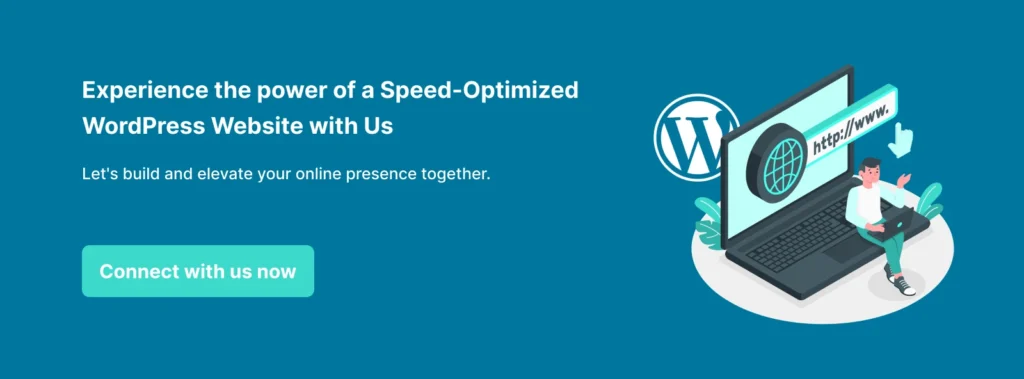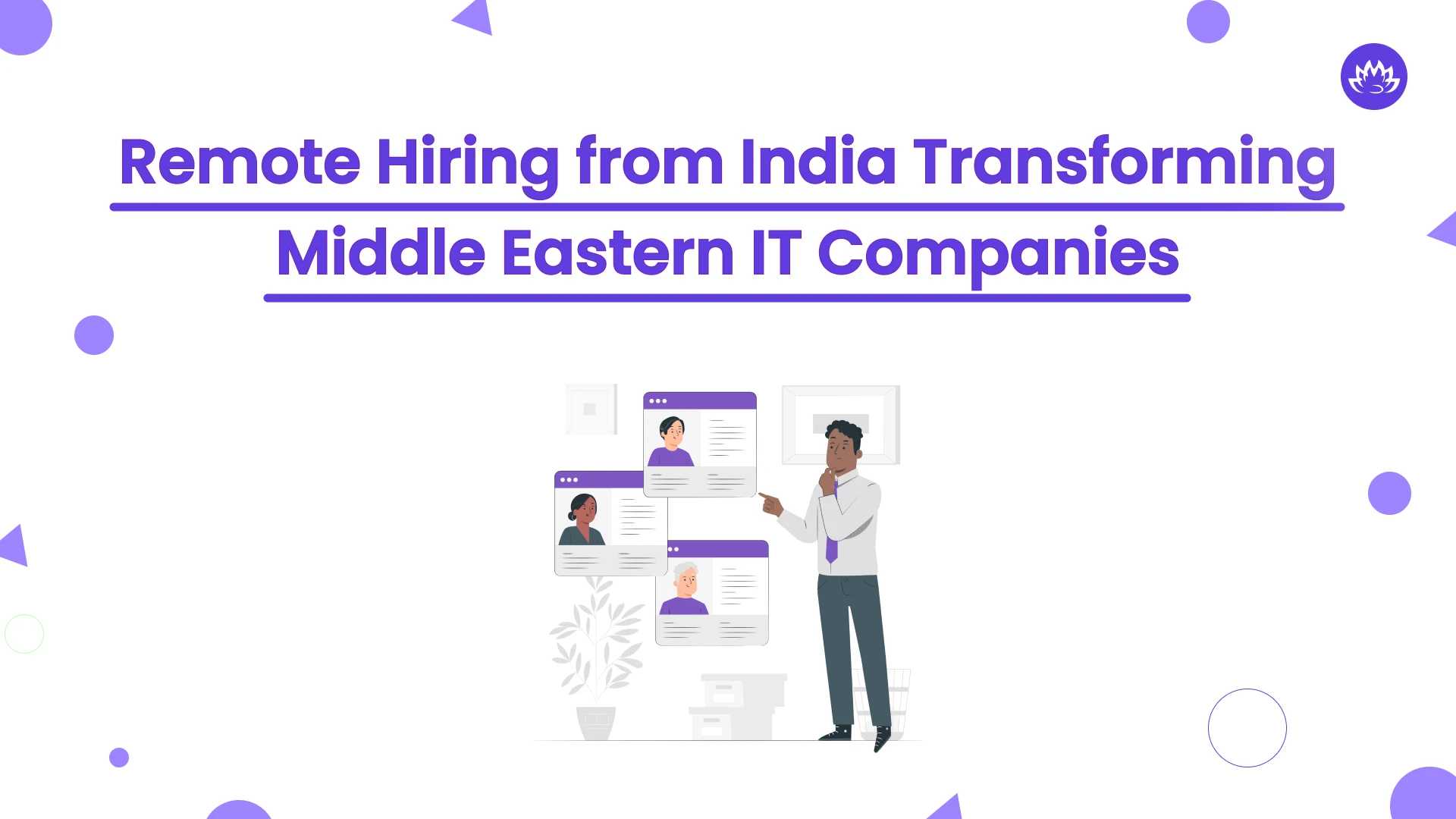Table Of Contents
- 1. Introduction
- 2. Initial Site Speed Analysis
- 3. Choosing the Right Plugins
- 4. Plugin Installation and Configuration
- 5. Image Optimization
- 6. Caching Strategies
- 7. Database Optimization
- 8. Minification and Concatenation
- 8.1. Reducing File Size with Minification
- 8.2. Concatenating CSS and JavaScript Files
- 9. Mobile Optimization
- 10. Troubleshooting Common Issues
- 11. Content Delivery Network (CDN) Integration
- 12. Conclusion
Have you ever imagined the hidden costs that your slow WordPress website bears out of lost potential customers and rising bounce rates? These prospects leave your website because they don’t want to waste their time doing tedious shopping. You must know that WordPress is a unique CMS platform that can fetch maximum profits out of your business. If you think you spent some bucks on ads and got the game, you are sending your prospects to a very slow-loading website that is eating up your ad budget and giving you nothing.
All you need is some optimizing strategies, simple tweaks, plugin settings, and good hacks to level up your website ranking and improve its loading speed. The article is all about practicing the top 10 best WordPress Speed Optimization hacks. With these tricks and tips, we are sure you will have a phenomenal Website Performance in 2024 and beyond.
If you are still not convinced, check out the below benefits that WordPress users get when they practice speed optimization strategies.
-
It reduces the loss of leads and improves the sales of your business
-
Pulls you out of slow page loading zone that is annoying your users
-
Enhances conversion ratios with a positive user experience
-
It reduces the loss of leads and improves the sales of your business
-
Pulls you out of slow page loading zone that is annoying your users
-
Enhances conversion ratios with a positive user experience
Top 10 WordPress Speed Optimization Tricks for 2024
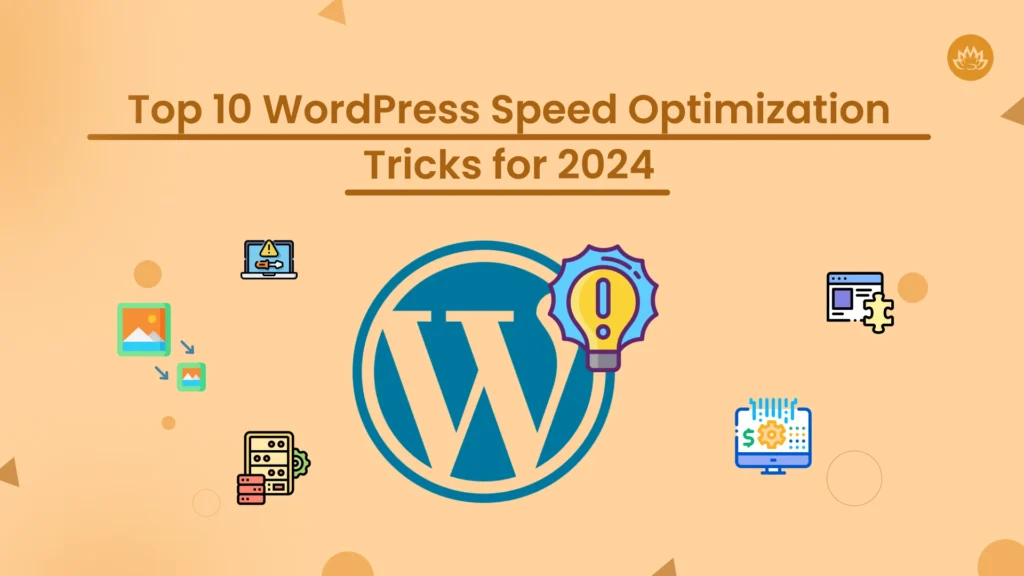
1. Initial Site Speed Analysis
Your very first task is to check the speed of your website. You can do this by using various online tools. However, some tools are popular like:
Google PageSpeed Insights
In this tool, you can enter URL that you want to test and get a performance score out of 100. They will recommend and suggest ways to improve your score, covering things like performance, accessibility, and what can you do the best. With these analytics, you get a detailed report with highlighted changes that can help you improve your WordPress site speed.
GT Metrix Test
This is a great tool for WordPress and gives you a detailed report on your site performance. It points out caching issues and highlights those causing slow loading times. It also guides you on ways to optimize the speed. This tool also determines the score out of 100 and shares recommendations for improvements. Most features of this tool come for free and if you want detailed analytics, you can sign up and pay the subscriptions.
Pingdom
This tool does not come for free. However, it gives you accurate results and enables you to improve WordPress site speed with the best insights that are considered as main goals. It checks the user-friendliness of your website, performance feedback, and much more. It provides an ongoing monitoring service updating users’ issues from time to time. Mostly this tool is used by web developers, professionals, digital marketers, and web hosting providers.
2. Choosing the Right Plugins
WordPress comes with an abundant range of plugins for your website. For every aspect and feature on your site, you have a set of plugins. Also, when it comes to site speed and getting a good speed-optimizing plugin, these plugins perform well. WP Rocket is one such plugin that handles many crucial aspects of site speed along with caching.
Caching is nothing but snapshot images of your website pages stored at the moment in time. This is done to reduce the load time because when a visitor browses your website, it shows those snapshot versions so that your site need not request every page again from the server. Well, caching plugin refreshes the cached version automatically as well and you can do this manually. You need not use multiple plugins for managing speed and rather use WP Rocket.
3. Plugin Installation and Configuration
WordPress has around 55,000 plugins for your website. It all depends on which one you need to install for your website. The earlier to get them, the more benefits you get out of it. They come with added functionality that is based on your website needs. It becomes easy to enhance your website functionality with WordPress plugins. Generally, there are three ways to install WordPress plugins. One is directly from the dashboard. The second is manually and the third is via File Transfer Protocol (FTP). The easiest way is to add plugins by searching for the desired plugin in your dashboard and then readily installing it.
4. Image Optimization
Images create a visual appeal for your website. Hence, you must include images that speak positively and do not demoralize users. Also, they should not hamper the site speed. If you want your WordPress website to load images faster, keep your images smaller. It is a simple truth but sometimes difficult to implement. Large images can reduce your page loading time. If you can’t reduce the size, you can also change the file format by using .webp file format.
Another thing is image compression. Rather than worrying about where to start with this, just go for the best plugins like Optimole or ShortPixel Image Optimizer. This will automatically compress your image and will monitor your images from its end, leaving you out of worries. Paying some money to use these plugins can help you with a lot of other benefits unless you have a small store and all you need is a few images to be optimized. Then there are some free plans available.
5. Caching Strategies
With the caching technique, all data that you access frequently gets temporarily preserved. They may be web pages, images, or anything. The benefit of caching is it reduces server loading time and optimizes WordPress site performance. Caching plugins like W3 Total Cache or WP Super Cache enable browser caching, page caching, and object caching all three on your WordPress website. In addition, you can use a reverse proxy server like Varnish to improve caching and amplify your site speed and performance.
Here is a small explanation of how caching works:
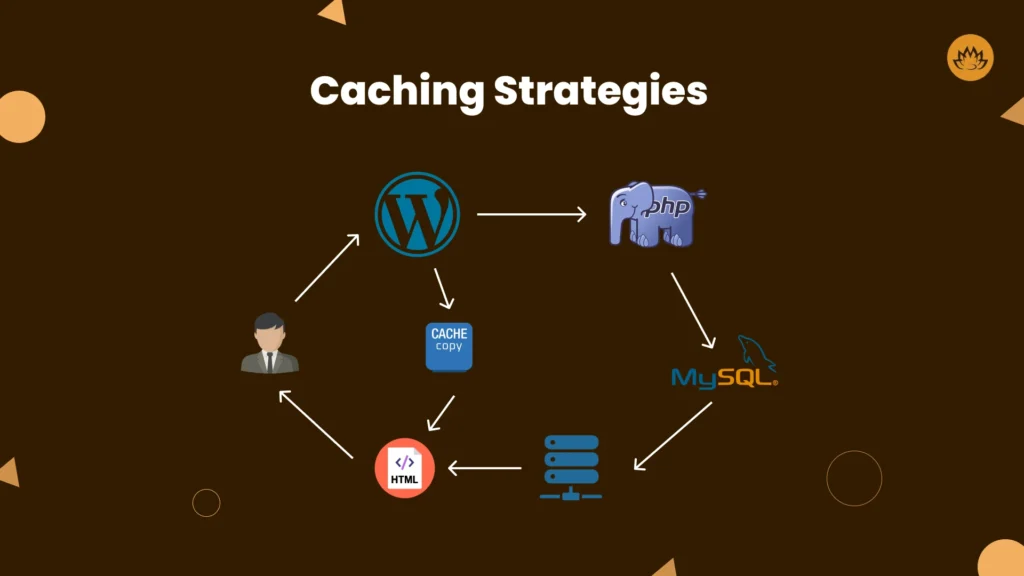
In the above image, whenever any user visits your WordPress site, your server recovers information from a database let’s say MySQL, and from your PHP files. All this together goes into HTML content and is served to the users. Technically, it is a lengthy process but with caching plugins like WP Rocket or WP Super Cache, your job becomes far easier. Even some of the top hosting companies like Bluehost and SiteGround offer caching solutions.
6. Database Optimization
Being a website owner, you will always strive to optimize the speed in WordPress and check on its performance. You can conduct an audit for this on your database and optimize it. This will help a lot during loading times. Because, it is your WordPress database that preserves all types of information like pages, posts, categories, comments, custom fields, tags, and other WordPress settings. Optimizing a database is all about having a thorough review of whatever is stored and trashing off unwanted data. Now to manage this activity in WordPress admin and speed up your site does not need any sort of technical skills. All you have to do is go to your database via hosting services and begin with sorting. The dashboard available in your hosting server will have a ‘database’ option that can be accessed within phpMyAdmin.
Here in case your database optimization is getting trickier and confusing, you may seek help from any expert as there are various tables and complicated names involved. You can then remove unwanted things and save your site from malfunction. For database scanning, you can use WP Optimize plugin that will help you search and remove unnecessary content. Make sure, while you do all this, you have a complete backup of your database before making any changes.
7. Minification and Concatenation
Minification is an action of removing unwanted and redundant code without hampering the browser processes.
a. Reducing File Size with Minification
File sizes can be reduced by the process of minimizing code and markup in your website pages as well as in your script files. This process is very crucial for optimizing load times and the bandwidth of website usage. With file size minification, your site speed improves dramatically and becomes very easy to access, immediately converting it into a better user experience.
b. Concatenating CSS and JavaScript Files
JavaScript minification will likewise remove all types of unnecessary JS content like extra spaces or strips of comments from the code. In this way, files become lighter as the code sizes start getting reduced. For manual processes, you can use free online tools like minifier.org. The fastest solution is using a plugin like WP Rocket that removes unwanted JS and makes loading time faster. Similarly in a CSS file, you can find whitespace, punctuation, and comment. Developers can use it to read codes more clearly. They can get rid of unwanted content and make the files lighter. Here too you can use minifier.org for manual process and WP Rocket plugin to clean up CSS files immediately.
8. Mobile Optimization
As we live in a world where mobile phones are an inevitable part of our lives, optimizing WordPress sites for mobiles is necessary. This process offers a seamless user experience and makes your site highly responsive, enhancing load times and easy navigation on those small screens. All you need to do is choose a responsive theme and check the site performance on mobile with a Google Mobile-friendly test. Here you can optimize images, and minimize CSS and JS files to ensure your site is easily accessible on mobile devices. Overall, you will find your user engagement improving with mobile optimization.
9. Troubleshooting Common Issues
With this technique, you can rule out factors until you do not find the real cause of the issue. For this, you must learn how to troubleshoot WordPress as it is an essential process for successful website management. You can troubleshoot common issues in many ways like clearing browse cache and cookies, using developer tools, analyzing server logs, checking HTTP error codes, checking website URL, deactivating plugins installed as due to some plugins there may be conflicts happening, etc.
10. Content Delivery Network (CDN) Integration
Integrating CDN (Content Delivery Network) can help in speed optimization by preserving your website on servers at multiple locations. When you use various geographical locations for data storage, users will get information more rapidly from a server that is close to them rather than the data traveling over longer distances. Even a lot of hosting services provide CDN integration in their hosting plans to harness the benefits of interconnected hosts networking worldwide for rapid delivery. So always choose a hosting service that provides this service. In option, Cloudflare is a free and trustworthy CDN to improve your site speed. It comes with some great security features.
Conclusion
We hope this guide will make your life simple while on a journey to optimize your website performance. You may be already feeling overwhelmed with so much information, as it needs years of understanding and hands-on experience to get all this done right. There are many ins and outs of managing a WordPress website and it is always safer to hire WordPress developers if you want your website to perform at its best from day one. Our WordPress developers offer full support for website optimization, addressing various WordPress speed issues, and site security, and can take up all the challenges to make your website do better. You can always speak to our experts and professional WordPress development team to learn more.
Author
-

Sunil is a result-orientated Chief Technology Officer with over a decade of deep technical experience delivering solutions to startups, entrepreneurs, and enterprises across the globe. Have led large-scale projects in mobile and web applications using technologies such as React Native, Flutter, Laravel, MEAN and MERN stack development.
View all posts



